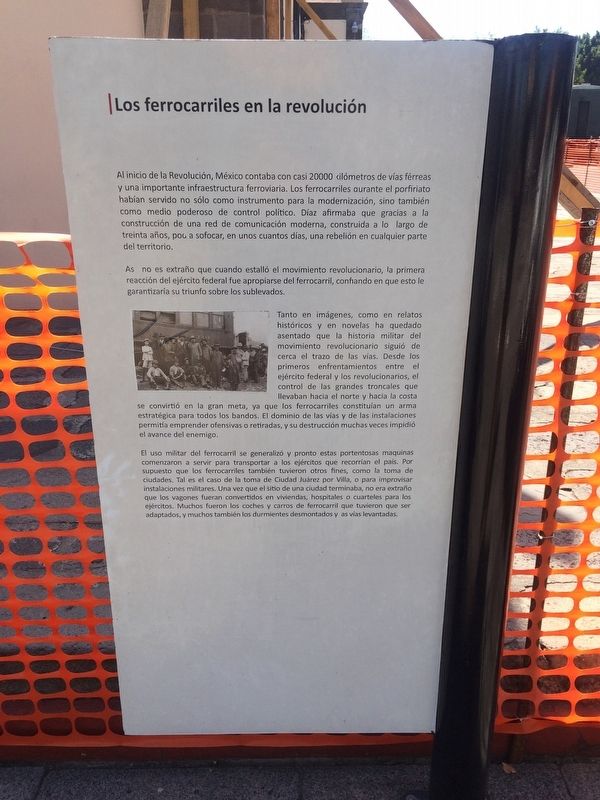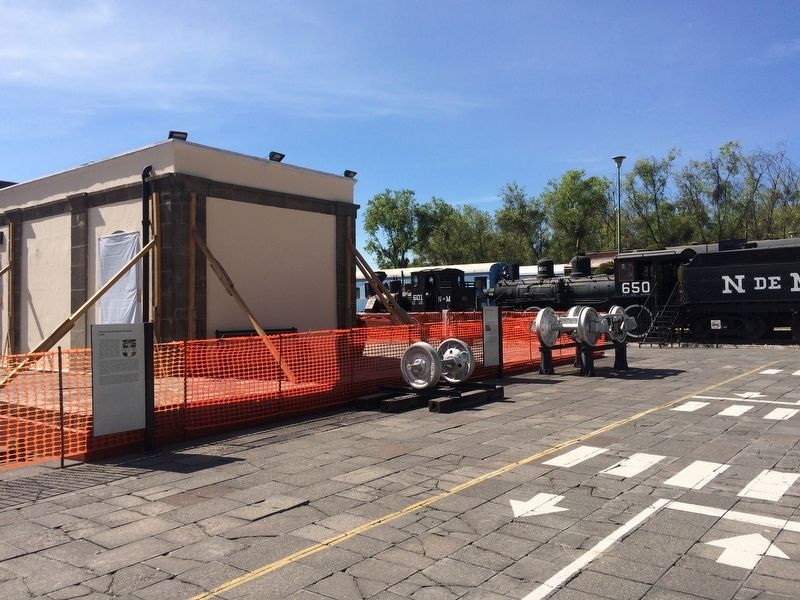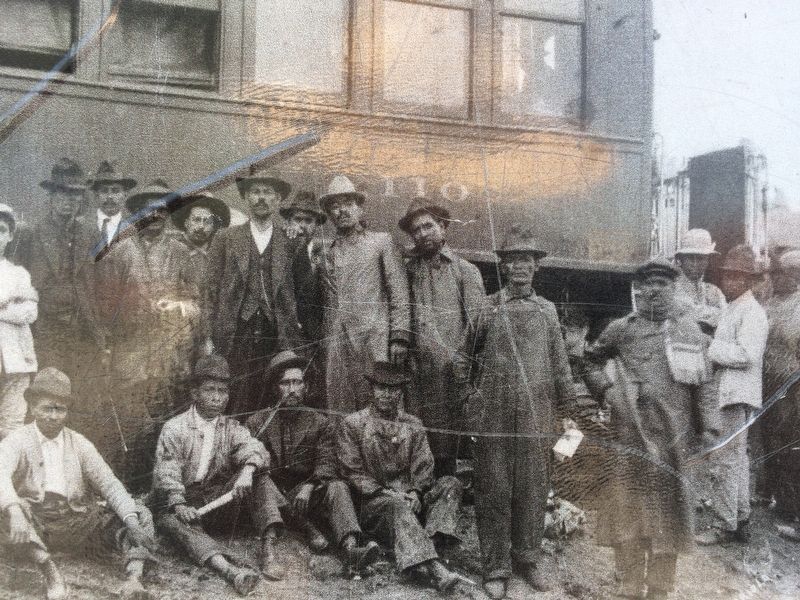Puebla, Mexico — The Central Highlands (North America)
Railroads in the Mexican Revolution
Los ferrocarriles en la revolución
Al inicio de la Revolución, México contaba con casi 20000 kilómetros de vías férreas y una importante infraestructura ferroviaria. Los ferrocarriles durante el porfiriato habían servido no sólo como instrumento para la modernización, sino también como medio poderoso de control político. Díaz afirmaba que gracias a la construcción de una red de comunicación moderna, construida a lo largo de treinta años, podía sofocar, en unos cuantos días, una rebelión en cualquier parte del territorio.
Así, no es extraño que cuando estalló el movimiento revolucionario, la primera reacción del ejército federal fue apropiarse del ferrocarril, confiando en que esto le garantizaría su triunfo sobre los sublevados.
Tanto en imágenes, como en relatos históricos y en novelas ha quedado asentado que la historia militar del movimiento revolucionario siguió de cerca el trazo de las vías. Desde los primeros enfrentamientos entre el ejército federal y los revolucionarios, el control de las grandes troncales que llevaban hacia el norte y hacia la costa se convirtió en la gran meta, ya que los ferrocarriles constituían un arma estratégica para todos los bandos. El dominio de las vías y de las instalaciones permitía emprender ofensivas o retiradas, y su destrucción muchas veces impidió el avance del enemigo.
El uso militar del ferrocarril se generalizó y pronto estas portentosas maquinas comenzaron a servir para transportar a los ejércitos que recorrían el país. Por supuesto que los ferrocarriles también tuvieron otros fines, como la toma de ciudades. Tal es el caso de la toma de Ciudad Juárez por Villa, o para improvisar instalaciones militares. Una vez que el sitio de una ciudad terminaba, no era extraño que los vagones fueran convertidos en viviendas, hospitales o cuarteles para los ejércitos. Muchos fueron los coches y carros de ferrocarril que tuvieron que ser adaptados, y muchos también los durmientes desmontados y las vías levantadas.
English translation:
Railroads in the Mexican Revolution
At the beginning of the Revolution, Mexico had almost 20,000 kilometers of railways and an important railway infrastructure. The railroads during the Porfiriato had served not only as an instrument for modernization, but also as a powerful means of political control. Díaz said that thanks to the construction of a modern communication network, built over thirty years, he could put down, in a few days, a rebellion in any part of the territory.
So, it's not strange that when the revolutionary movement broke out, the first reaction of the federal army was to take control of the railroad, trusting that this would guarantee its
triumph over the insurgents.
It has been established in images, historical accounts and in novels that the military history of the revolutionary movement closely followed the railroad tracks. Since the first confrontations between the federal army and the revolutionaries, the control of the large trunk lines that led north and to the coast became a main objective, since the railways were strategic for either side. The mastery of the roads and facilities allowed offensives or retreats, and their destruction often prevented the advance of the enemy.
The military use of the railroad became widespread and soon these portentous machines began to transport the armies that roamed the country. Of course the railways also had other purposes, such as the taking of cities. Such is the case of the capture of Ciudad Juárez by Villa. They were also used as improvised military installations. Once the seige of a city ended, it was not strange to see railcars converted into homes, hospitals or barracks for the armies. Many railcars were modified or adapted and many railroad ties and tracks were dismantled.
Topics. This historical marker is listed in these topic lists: Railroads & Streetcars • Wars, Non-US.
Location. 19° 3.2′ N, 98° 12.231′ W. Marker is in Puebla. Marker can be reached
from Calle 11 Norte close to Avenida 14 Poniente, on the left when traveling south. The marker is on the grounds of the Mexican National Railroad Museum, to the left just after the entrance. Touch for map. Marker is in this post office area: Puebla 72090, Mexico. Touch for directions.
Other nearby markers. At least 8 other markers are within walking distance of this marker. National Railroads of Mexico (here, next to this marker); The Railway Stations of Puebla (a few steps from this marker); Engine 601 (a few steps from this marker); Steam Engines (a few steps from this marker); The Hero of Nacozari (a few steps from this marker); Steam Locomotive NM-601 (a few steps from this marker); FT Diesel-Electric Locomotive (within shouting distance of this marker); A National Railroad Network (within shouting distance of this marker). Touch for a list and map of all markers in Puebla.
Credits. This page was last revised on December 13, 2017. It was originally submitted on December 13, 2017, by J. Makali Bruton of Accra, Ghana. This page has been viewed 278 times since then and 21 times this year. Photos: 1, 2, 3. submitted on December 13, 2017, by J. Makali Bruton of Accra, Ghana.


